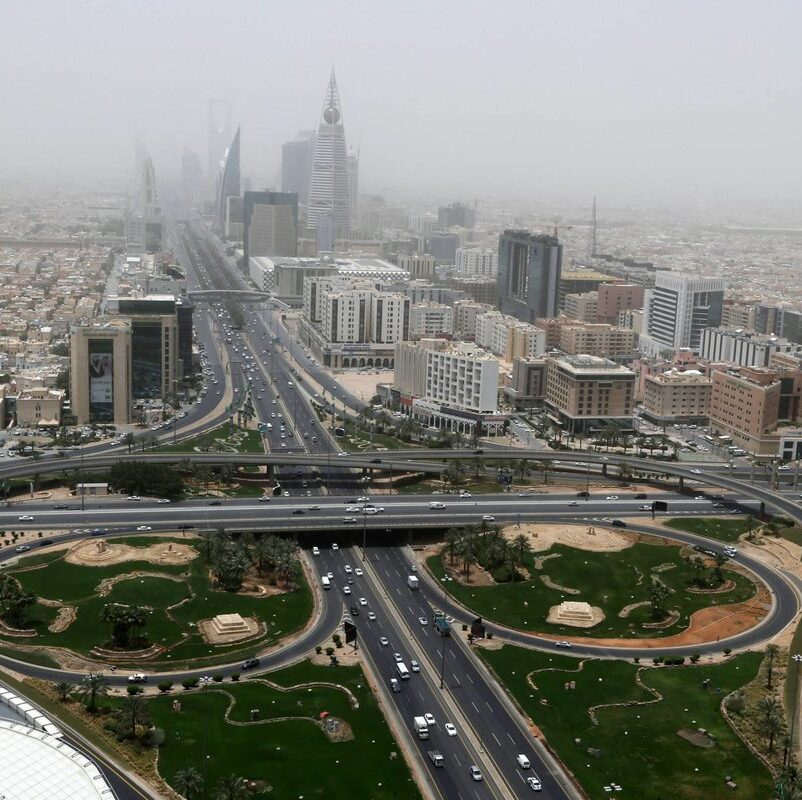
Saudi Arabia announced on Monday a roadmap to achieve its ambitious greening target of growing 10 billion trees under the Saudi Green Initiative, a project spearheaded by Prince Mohammed bin Salman bin Abdulaziz Al Saud, Crown Prince, Prime Minister, and Chairman of the Higher Committee for the Saudi Green Initiative.
The announcement reflects the Kingdom’s commitment to addressing the environmental challenges it faces and to improving the quality of life of its citizens through the long-term economic and social benefits that will also be unlocked by the planting efforts.
The roadmap was announced at the second annual MENA Climate Week that is being held in Saudi Arabia from October 8-12.
The roadmap strategically lays out a plan for Saudi Arabia’s habitat zones to achieve the maximum potential vegetation cover. Additionally, it considers zones such as cities, highways and greenbelts to ensure that trees are planted where they can deliver ecosystem services that benefit the health and wellbeing of Saudi residents, the majority of whom live in urban areas.
City centers are projected to benefit from increased tree canopy cover which will reduce temperatures by at least 2.2℃ and improve air quality.
Extreme heat and ambient air pollution are some of the most prevalent environmental hazards affecting urban residents globally and are associated with a range of non-communicable diseases, such as respiratory and cardiovascular illnesses.
Reduced CO2 levels is an anticipated benefit of increased tree plantation and green spaces in cities.
Over the course of implementation, jobs will be created Kingdom-wide to assist with efforts including tree growing, seed collection, landscape preparation and maintenance, development of urban water reuse networks, the creation of new parks and protected areas, and pioneering sustainability innovations.
Saudi Arabia’s tree planting target is one of the highest amongst any greening program globally. The Kingdom faces some of the most challenging natural conditions with rainfall, arable land mass, and forest area all below the global average.
The 10 billion tree target was originally announced as being equivalent to rehabilitating 40 million hectares of land. In the process of conducting the study, the target has been revised to 74.8 million hectares.
Planting 10 billion trees amounts to 1% of the global greening target and 20% of the Middle East Green Initiative’s afforestation target of planting 50 billion trees across the Middle East. Forty-one million trees have already been planted in Saudi Arabia between 2017 to 2023.
The roadmap is the outcome of a two-year in-depth feasibility study conducted by the Ministry of Environment, Water and Agriculture (MEWA) and the National Center for Vegetation Development and Combating Desertification (NCVC). The study was undertaken in collaboration with renowned multidisciplinary global and local experts.
The objective of the study was not only to make the 10 billion target achievable but to incorporate sustainable irrigation methods into the planting process and ensure that the trees and shrubs selected are compatible with the Kingdom’s native varieties and suitable to the selected environment.
Over 1,150 field surveys were conducted across Saudi Arabia as part of the study, including geospatial suitability analysis for vegetation cover, based on environmental conditions including soil, water, temperature, wind and elevation. The study included a thorough assessment of all possible sectoral domains in the Kingdom, leveraging science-based recommendations and technology.
The chosen roadmap will be implemented in two phases. The first, extending between 2024 and 2030, will focus on the environmental domain, taking a nature-based approach. From 2030 onwards, phase two will be implemented incorporating a fully comprehensive approach with the greatest level of human intervention.
The Kingdom is home to a rich diversity of over 2,000 species of flora spread across a variety of habitat zones including mangroves, inland marshes, mountain forests, rangelands, national parks and valleys. By 2030, over 600 million trees are expected to be planted.




